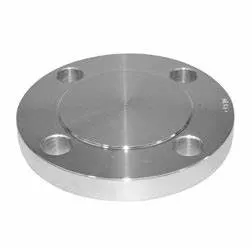-
Cangzhou Yulong Steel Co., Ltd.
-
Phone:
+86 13303177267 -
Email:
admin@ylsteelfittings.com
- English
- Arabic
- Italian
- Spanish
- Portuguese
- German
- kazakh
- Persian
- Greek
- French
- Russian
- Polish
- Thai
- Indonesian
- Vietnamese
- Zulu
- Korean
- Uzbek
- Hindi
- Serbian
- Malay
- Ukrainian
- Gujarati
- Haitian Creole
- hausa
- hawaiian
- Hebrew
- Miao
- Hungarian
- Icelandic
- igbo
- irish
- Japanese
- Javanese
- Kannada
- Khmer
- Rwandese
- Afrikaans
- Albanian
- Amharic
- Armenian
- Azerbaijani
- Basque
- Belarusian
- Bengali
- Bosnian
- Bulgarian
- Catalan
- Cebuano
- China
- China (Taiwan)
- Corsican
- Croatian
- Czech
- Danish
- Esperanto
- Estonian
- Finnish
- Frisian
- Galician
- Georgian
- Kurdish
- Kyrgyz
- Lao
- Latin
- Latvian
- Lithuanian
- Luxembourgish
- Macedonian
- Malgashi
- Malayalam
- Maltese
- Maori
- Marathi
- Mongolian
- Myanmar
- Nepali
- Norwegian
- Norwegian
- Occitan
- Pashto
- Dutch
- Punjabi
- Romanian
- Samoan
- Scottish Gaelic
- Sesotho
- Shona
- Sindhi
- Sinhala
- Slovak
- Slovenian
- Somali
- Sundanese
- Swahili
- Swedish
- Tagalog
- Tajik
- Tamil
- Tatar
- Telugu
- Turkish
- Turkmen
- Urdu
- Uighur
- Welsh
- Bantu
- Yiddish
- Yoruba

Jul . 27, 2024 01:42 Back to list
Innovative Solutions for Rubber Moulded Elbows in Industrial Applications and Custom Designs
The Versatility and Applications of Rubber Moulded Elbows
Rubber moulded elbows have become an indispensable component in various industries due to their flexibility, durability, and resistance to a wide range of environmental conditions. These specially designed fittings are primarily used to connect different sections of piping systems, allowing for changes in direction with minimal disruption to the flow of fluids or gases. This article will explore the advantages, manufacturing process, applications, and future prospects of rubber moulded elbows.
Advantages of Rubber Moulded Elbows
One of the primary benefits of rubber moulded elbows is their excellent flexibility
. Unlike rigid materials such as metal or plastic, rubber allows for an easier installation process, particularly in tight spaces where traditional fittings may be challenging to maneuver. This flexibility also accommodates vibrations and movements in pipelines, enabling the systems to operate smoothly without compromising integrity.The resilience of rubber is another significant advantage. Rubber moulded elbows can withstand harsh conditions, including extreme temperatures, pressure variations, and exposure to chemicals. This resistance ensures that they maintain their shape and functionality, leading to fewer replacements and reduced maintenance costs over time. Furthermore, rubber has inherent noise-damping properties, which can minimize vibrations and disturbances in industrial settings.
Manufacturing Process
Producing rubber moulded elbows involves several critical steps that ensure the final product meets stringent industry standards. The process begins with selecting the appropriate type of rubber, which can range from natural to synthetic elastomers, depending on the application's requirements. Factors like temperature resistance, chemical compatibility, and flexibility play a crucial role in material selection.
Once the suitable rubber is chosen, the moulding process begins. This typically involves a combination of compression moulding or injection moulding techniques, where the rubber is heated and formed into the desired shape. After moulding, the elbows undergo a curing process, where they are heated to create cross-links in the rubber, enhancing their strength and durability. Finally, quality control measures are implemented to test the elbows against various parameters such as pressure, temperature, and tensile strength.
rubber moulded elbows

Applications
Rubber moulded elbows find applications across a wide array of industries, including agriculture, manufacturing, automotive, and oil and gas. In the agricultural sector, they are commonly used in irrigation systems to divert water flow or connect different hoses. In manufacturing, rubber elbows are utilized in pneumatic and hydraulic systems, where flexibility and resistance to wear are paramount.
Automotive applications also benefit from rubber moulded elbows. They are often found in vehicle cooling systems, exhaust systems, and air intake systems, where they assist in the smooth transition of fluids and gases. The oil and gas industry uses these elbows for transporting hydrocarbons safely and efficiently through pipelines, where resilience against extreme conditions is crucial.
Future Prospects
As industries continue to evolve, the demand for innovative, durable solutions will drive advancements in rubber moulded elbow manufacturing. With the growing emphasis on sustainability, the development of eco-friendly rubber materials is becoming increasingly important. Manufacturers are exploring bio-based rubbers and recyclable formulations to cater to environmentally conscious markets.
Moreover, advancements in technology could lead to the incorporation of smart features within rubber moulded elbows, such as sensors for monitoring pressure and temperature. This integration could enhance system efficiency and provide real-time data for maintenance, thereby minimizing downtime.
In conclusion, rubber moulded elbows are versatile components that play a vital role in various piping systems across multiple industries. Their flexibility, resilience, and adaptability make them a preferred choice for many applications. As technology continues to advance and environmental considerations become more prominent, the future of rubber moulded elbows looks promising, suggesting continued innovation and improved performance.
Latest news
-
ANSI 150P SS304 SO FLANGE
NewsFeb.14,2025
-
ASTM A333GR6 STEEL PIPE
NewsJan.20,2025
-
ANSI B16.5 WELDING NECK FLANGE
NewsJan.15,2026
-
ANSI B16.5 SLIP-ON FLANGE
NewsApr.19,2024
-
SABS 1123 FLANGE
NewsJan.15,2025
-
DIN86044 PLATE FLANGE
NewsApr.19,2024
-
DIN2527 BLIND FLANGE
NewsApr.12,2024
-
JIS B2311 Butt-Welding Fittings LR/SR 45°/90° /180°Seamless/Weld
NewsApr.23,2024











